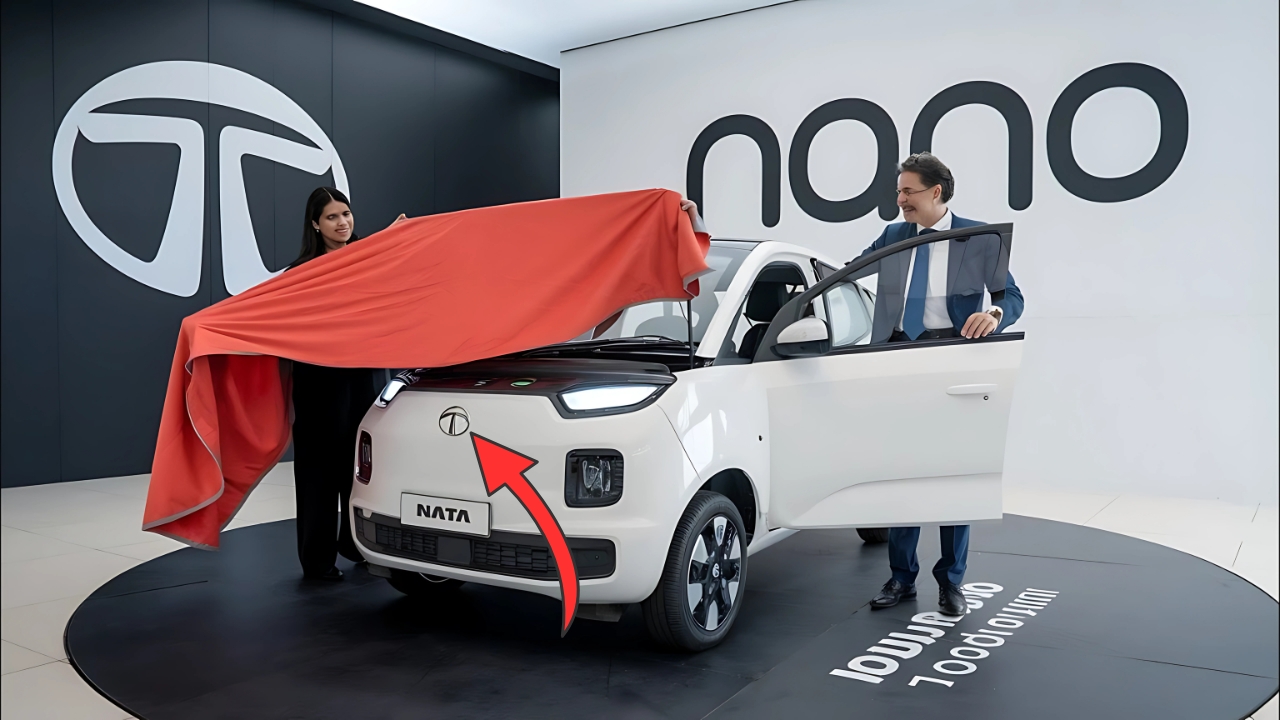[ez-toc]
[ad_1]
Here’s a rewritten version of the article in-depth:
The Tata Nano’s Electric Revamp: A Game-Changer in Sustainable Transport
The Tata Nano, once hailed as the world’s most affordable car, has undergone a remarkable transformation in its journey towards electrification. This evolution represents not only a technological upgrade but also a significant shift in India’s automotive landscape, reflecting the country’s growing commitment to sustainable transportation solutions.
In the early 2000s, Ratan Tata envisioned the Nano as a means to provide affordable mobility to millions of Indian families. The electric version of this iconic vehicle builds upon that foundation while addressing contemporary environmental challenges. The Tata Nano EV emerges as a solution that combines affordability with sustainability, potentially revolutionizing urban transportation in developing markets.
Engineering Advancements
The electric variant of the Nano showcases significant engineering advancements. The compact electric powertrain delivers improved performance compared to its combustion predecessor. The lithium-ion battery pack, strategically positioned to maintain the car’s low center of gravity, provides a range suitable for urban commuting. The motor generates sufficient torque for city driving conditions, while the regenerative braking system enhances energy efficiency.
The vehicle’s lightweight construction, a hallmark of the original Nano, proves advantageous in the electric version. Engineers have optimized the chassis and body structure to accommodate the battery pack without compromising structural integrity. The suspension system has been recalibrated to handle the additional weight while maintaining ride comfort.
Modern Features and Safety
Despite its positioning as an affordable electric vehicle, the Nano EV incorporates modern features essential for contemporary urban mobility. The digital instrument cluster provides real-time information about battery status, range, and vehicle performance. The infotainment system offers smartphone connectivity, navigation assistance, and vehicle diagnostics. The interior design maximizes space efficiency, accommodating four adults comfortably despite the compact exterior dimensions.
Innovative Charging and Sustainability
Recognizing the importance of charging infrastructure, Tata has developed comprehensive charging solutions for Nano EV owners. The vehicle supports multiple charging options, including home charging and fast charging at public stations. Partnerships with energy providers and local authorities aim to expand the charging network, addressing range anxiety concerns.
Tata has also introduced innovative charging solutions specific to Indian conditions, such as solar-powered charging stations and battery swapping facilities. These initiatives demonstrate a holistic approach to electric mobility, considering the unique challenges of developing markets.
Operational Benefits
The ownership experience of the Nano EV offers several advantages over conventional vehicles. Lower operating costs, minimal maintenance requirements, and government incentives make it economically attractive for long-term ownership. The silent operation and smooth power delivery enhance driving comfort, particularly in urban conditions.
Future of the Platform
The Tata Nano EV platform holds potential for future developments and market expansion. Tata’s research and development teams continue to work on range improvements, faster charging capabilities, and enhanced features. The platform could spawn variants targeting different market segments, including commercial applications for last-mile delivery and shared mobility services.
International markets, particularly in developing regions with similar transportation needs, present opportunities for expansion. The experience gained from the Indian market could prove valuable in adapting the vehicle for other regions while maintaining its core value proposition of affordable electric mobility.
Challenges and Opportunities
The development and launch of the Nano EV face several challenges, including battery technology limitations, charging infrastructure development, and consumer acceptance of electric vehicles. However, these challenges have spurred innovation in engineering solutions and business models.
The industry response to the Nano EV has been noteworthy, with competitors accelerating their electric vehicle programs. This competition drives further innovation and market development, benefiting consumers through improved products and services.
In conclusion, the Tata Nano EV is a significant milestone in affordable electric mobility. By combining innovative engineering, practical features, and strategic market positioning, it addresses the growing demand for sustainable transportation solutions. The success of this initiative could accelerate India’s transition to electric mobility while providing a template for similar markets worldwide. As environmental concerns and urbanization continue to shape transportation needs, vehicles like the Nano EV will play crucial roles in sustainable mobility solutions.
[ad_2]

Live News Daily is a trusted name in the digital news space, delivering accurate, timely, and in-depth reporting on a wide range of topics.
